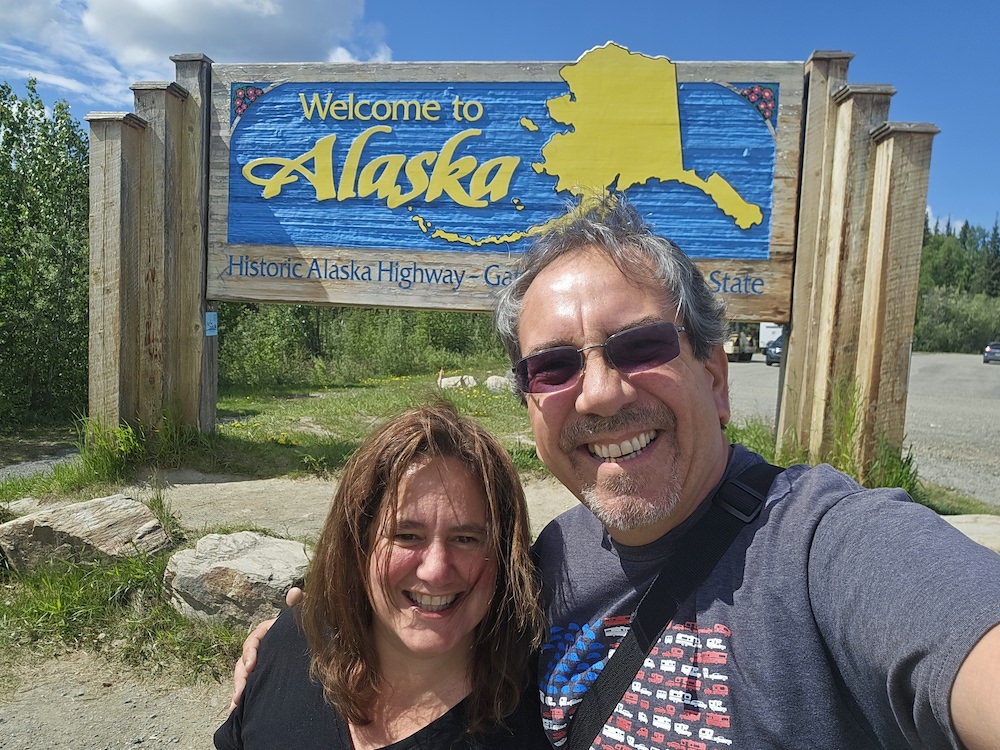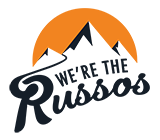This post may contain affiliate links.
In this episode of the RVing with Joe & Kait podcast, we talk to Robert Morales, a seasoned RV traveler and YouTuber known for his channel Traveling Robert. Robert shares his extensive experience RVing to and through Alaska, providing valuable insights and tips for fellow RVers who dream of exploring the Last Frontier. From practical advice on navigating Alaskan roads to must-see destinations, this episode is packed with everything you need to know for an unforgettable Alaskan RV adventure.
RVing Alaska with Robert Morales

Where to watch/listen
- Watch on YouTube
- Listen on Spotify
- Listen on Apple Podcasts
- Listen on Amazon Music
- Listen on iHeartRadio
- Listen on Pandora
- Listen on Podcast Addict
If you enjoyed this episode of RVing with Joe & Kait, please leave a review on Apple Podcast or Spotify. It would mean a lot to us. Thank you!
Episode Guest
Robert Morales is a Cuban born, Floridian by choice, insatiable traveler. He shares his RV travel stories, producing inspiring, informative, and entertaining videos, enjoying the journey as much as the destination, sampling the local cuisine, imbibing the local craft ales, visiting the main attractions, and off the beaten path destinations.
In 2014 he acquired a small Winnebago travel trailer to explore the United States of America and beyond. In 2020 he became a Winnebago Micro Minnie brand ambassador. Having visited all 48 contiguous states and Alaska, Robert continues to travel sharing his adventures on YouTube and most of the other social channels.
Links:
- travelingrobert.com
- youtube.com/@travelingrobert
- facebook.com/travelingrobert
- instagram.com/travelingrobert/
- twitter.com/travelingrobert
- tiktok.com/@travelingrobert
Resources Mentioned in this Episode
- Alaska RV Travel Series by Traveling Robert
- Road to Alaska RV Travel Series by Traveling Robert
- Milepost – Alaska Travel Planner
- Starlink High Speed Internet on the Go
- Internet Options for RVers
- We’re the Russos YouTube Channel
- Newsletter sign up
- Book 1: Take Risks
- Book 2: Tales From the Open Road
Key Highlights
- YOLO Moment in RV Purchase: Robert recalls the spontaneous decision to start his RVing journey, emphasizing the importance of seizing the moment.
- Navigating the Alaskan Terrain: Insights into the varying road conditions across Alaska, and tips for handling challenging routes.
- RVing Alaska Trip Planning Tips: Robert shares practical tips for effective trip planning, including route suggestions and must-visit spots.
- The Three Faces of Alaska: Robert’s unique perspective on Alaska’s diverse regions, from the untamed north to the bustling urban centers.
- Connectivity in the Wilderness: How technology like Starlink revolutionized Robert’s travel experiences, especially in remote Alaskan locations.
- Wildlife and Culinary Adventures: Engaging stories of encounters with Alaskan wildlife and indulging in local delicacies, including a $90 pizza.
Chapters
00:45 Welcome and introduction
03:50 What it’s like to travel to Alaska in an RV
08:45 The three distinct regions of Alaska
11:43 Timeline of Robert’s RV road trip to Alaska, must-see destinations and places to camp along the way
18:02 Border crossings
19:03 Arriving in Alaska and exploring in an RV
23:37 The mosquitoes in Alaska
26:17 Worst road in Alaska and a rookie mistake
27:08 Robert shares his tips for RVing Alaska, including essential resources including Starlink satellite internet
30:12 How long to plan for an Alaska RV road trip, campground reservations, pre-booking tours and experiences
32:16 Coolest experience in Alaska
36:15 Most beautiful cruise in Alaska
38:36 Reserving campgrounds in Alaska
41:03 The $90 pizza experience in Alaska
50:45 Carrying a spare tire
Explore More Alaska Adventures
If you enjoyed learning about Robert’s Alaska RVing adventures, don’t miss our podcast episode featuring Adam Rubin from DogandaJeep. Adam shares his journey to Alaska with his Alaskan Malamute, Odin, and offers invaluable insights into road tripping, winter camping, and exploring the Last Frontier. Listen to Exploring Alaska with Adam Rubin here.
📞 Book a Call with Joe
Are you buying your first RV or have questions about RVing? If you’re looking for advice on RVs, what kind(s) to consider, amenities and a whole host of other things you may not have even considered, you can book a 1 hour call with me. With experience in full-time and part-time RV living, including overseas adventures, I’ll guide you through researching, shopping, and purchasing your RV. Get personalized advice to avoid common pitfalls and make informed decisions that suit your lifestyle and budget. Learn More.
